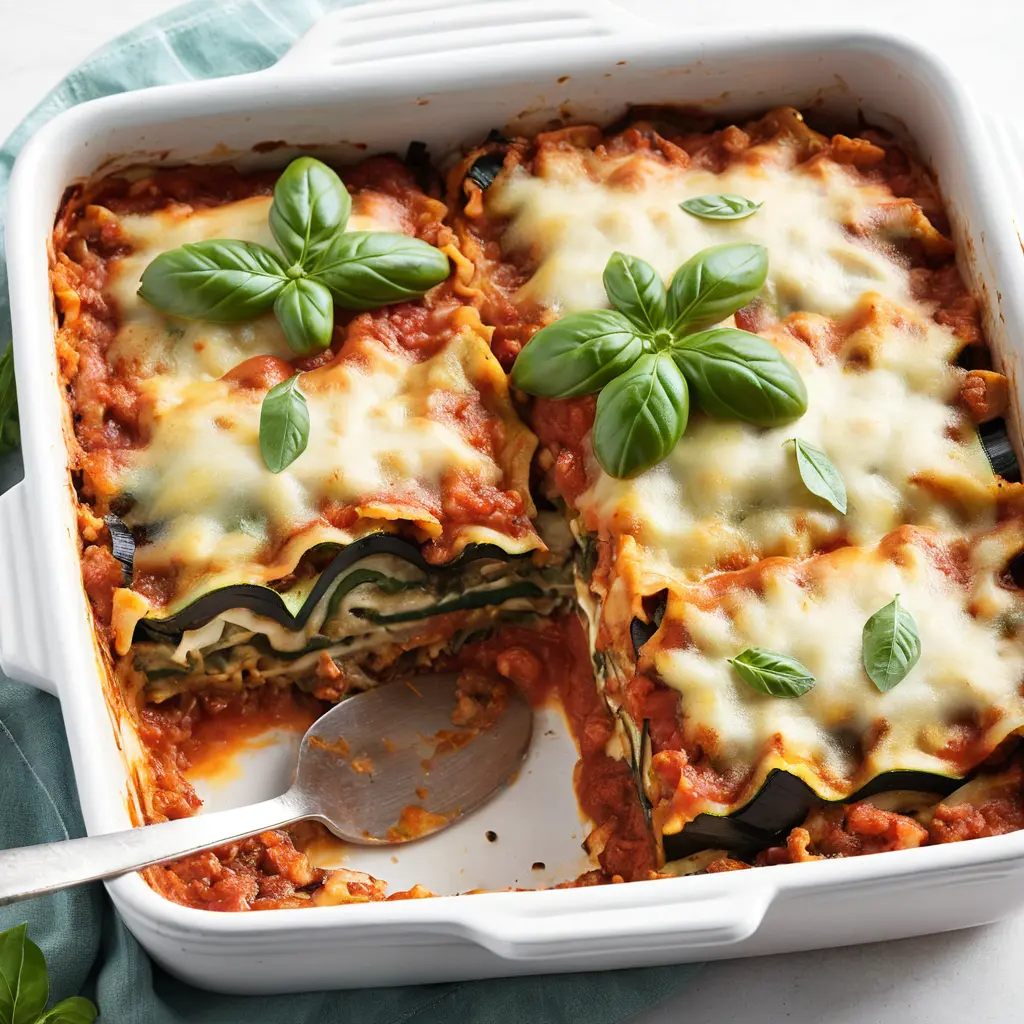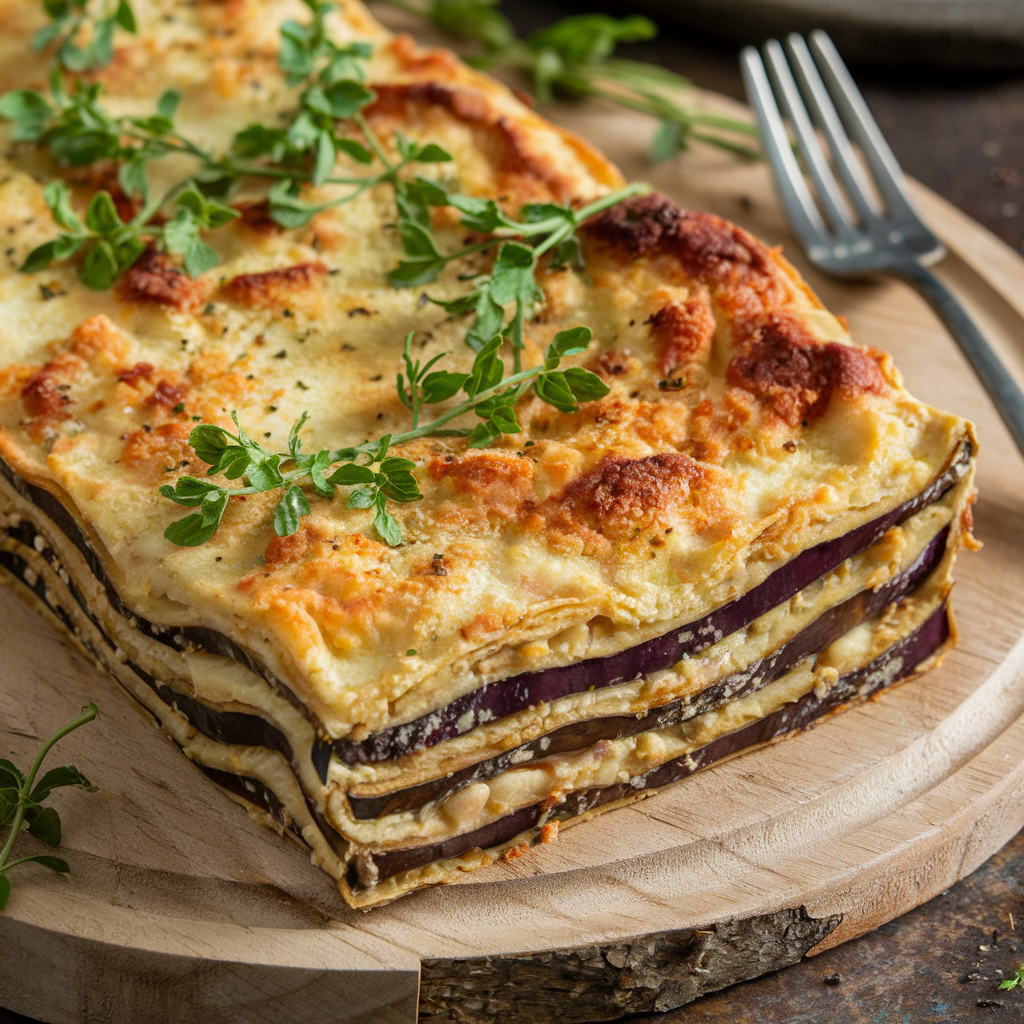Introduction
Lasagna is a beloved comfort food that brings warmth and flavor to any dinner table. But if you’re looking to indulge without the heaviness of traditional pasta, you might want to try eggplant zucchini lasagna. This innovative twist on the classic Italian dish replaces the usual noodles with thin slices of eggplant and zucchini, making it a low-carb, gluten-free, and vegetable-packed alternative. Perfect for those with dietary restrictions or anyone looking to lighten up their lasagna without sacrificing flavor, eggplant zucchini lasagna is a crowd-pleasing dish that is both satisfying and nutritious.
In this article, we’ll explore how to make this healthy yet delicious lasagna, the benefits of using eggplant and zucchini, and how you can customize the recipe to suit your taste. From the sauce to the cheese, we will walk you through each step to create a savory, flavorful, and hearty meal that can easily become your new favorite.
Why Choose Eggplant and Zucchini for Lasagna?
While traditional lasagna is known for its layers of pasta, ground meat, and cheese, eggplant and zucchini offer a wonderful opportunity to enhance the dish with more nutritional value and flavor complexity. Here’s why these two vegetables are great substitutes for pasta:
- Low in Carbs and Calories: Both eggplant and zucchini are naturally low in carbohydrates and calories, which makes them an excellent option for those following a keto or low-carb diet.
- Rich in Nutrients: Eggplants are rich in antioxidants, particularly nasunin, which helps protect cells from damage. Zucchini, on the other hand, is high in vitamin C, potassium, and fiber, promoting digestion and overall health.
- Versatile Flavors: When baked or grilled, eggplant and zucchini develop a rich, savory flavor that pairs perfectly with tomato sauce and cheese.
Using these vegetables instead of pasta not only reduces the calorie content of the dish but also adds a unique depth of flavor and texture. Plus, they absorb the savory tomato sauce and cheese beautifully, creating a mouthwatering lasagna.

Ingredients for Eggplant Zucchini Lasagna
To make a delicious eggplant zucchini lasagna, you’ll need the following ingredients:
Vegetable Layers:
- 1 large eggplant (or two medium-sized), sliced thinly
- 2 medium zucchinis, sliced thinly
- Olive oil for brushing
- Salt and pepper to taste
Tomato Sauce:
- 2 tablespoons olive oil
- 1 medium onion, finely chopped
- 3 garlic cloves, minced
- 1 can (28 oz) crushed tomatoes
- 2 tablespoons tomato paste
- 1 teaspoon dried oregano
- 1 teaspoon dried basil
- Salt and pepper to taste
- A pinch of red pepper flakes (optional for some heat)
For the Cheese Filling:
- 2 cups ricotta cheese
- 1 large egg
- 1 cup shredded mozzarella cheese
- 1/2 cup grated Parmesan cheese
- Fresh basil, chopped (optional for extra flavor)
How to Make Eggplant Zucchini Lasagna
1: Prepare the Vegetables
- Begin by preheating your oven to 375°F (190°C).
- Slice the eggplant and zucchini into thin rounds. A mandolin slicer is a great tool for getting even slices.
- Lay the vegetable slices on a baking sheet in a single layer. Brush them lightly with olive oil and season with salt and pepper.
- Roast them in the oven for about 15 minutes, flipping halfway through, until they become tender and slightly browned.
2: Make the Tomato Sauce
While the vegetables are roasting, you can prepare the sauce:
- In a large pan, heat the olive oil over medium heat.
- Add the chopped onion and sauté until soft and translucent, about 5 minutes.
- Add the minced garlic and cook for another minute until fragrant.
- Stir in the crushed tomatoes, tomato paste, oregano, basil, salt, pepper, and red pepper flakes (if using).
- Let the sauce simmer on low heat for about 20 minutes to allow the flavors to meld together.
3: Prepare the Cheese Mixture
- In a bowl, mix the ricotta cheese with the egg, half of the mozzarella cheese, and the grated Parmesan.
- Stir in chopped fresh basil if you like a little extra flavor in your cheese filling. The mixture should be thick and creamy.
4: Assemble the Lasagna
- In a baking dish, spread a thin layer of the tomato sauce at the bottom.
- Next, add a layer of roasted eggplant and zucchini slices.
- Spoon some of the cheese mixture over the vegetables and spread it evenly.
- Repeat the layers: sauce, vegetables, cheese, until you’ve used up all the ingredients. Make sure the top layer is covered with sauce and cheese.
- Finish by sprinkling the remaining mozzarella cheese over the top for a golden, cheesy finish.
5: Bake and Serve
- Cover the baking dish with aluminum foil and bake for about 25 minutes.
- Remove the foil and bake for an additional 10 minutes until the top is bubbly and golden.
- Allow the lasagna to cool for a few minutes before slicing and serving.
Tips for the Best Eggplant Zucchini Lasagna
- Pre-salt the Eggplant: Eggplant has a tendency to release excess moisture during cooking, which can make your lasagna watery. To avoid this, sprinkle the sliced eggplant with salt and let it sit for about 30 minutes. Then, pat it dry with paper towels before roasting.
- Use Fresh Ingredients: Fresh basil, quality mozzarella, and homemade tomato sauce can elevate the flavor of your lasagna.
- Make Ahead: Eggplant zucchini lasagna can be made a day ahead. Simply assemble it, cover it with plastic wrap, and refrigerate until ready to bake. This allows the flavors to develop even further.
- Add Meat: If you’re not strictly vegetarian, you can add ground turkey, chicken, or beef to the tomato sauce for a more traditional lasagna experience.
- Add Other Vegetables: You can also add other vegetables like spinach, mushrooms, or bell peppers to the layers for added flavor and nutrition.
Nutritional Benefits of Eggplant Zucchini Lasagna
Eggplant Zucchini Lasagna is a healthy and nutritious alternative to traditional lasagna, offering several benefits. Here’s a breakdown of its nutritional advantages:
1. Low in Calories and Carbs
- Eggplant and zucchini are both low-calorie and low-carb vegetables, making them excellent choices for those seeking to manage their weight or reduce carbohydrate intake. These veggies replace traditional lasagna noodles, significantly reducing the overall calorie and carb content of the dish.
2. High in Dietary Fiber
- Both eggplant and zucchini are rich in fiber, which promotes healthy digestion, supports gut health, and helps regulate blood sugar levels. Fiber also contributes to a feeling of fullness, aiding in appetite control and weight management.
3. Rich in Antioxidants
- Eggplant contains nasunin, an antioxidant that helps protect the brain and supports cardiovascular health. Zucchini is a good source of antioxidants like vitamin C, which supports immune function and skin health. Both vegetables also contain other phytonutrients that help protect against free radical damage and inflammation.
4. Packed with Vitamins and Minerals
- Eggplant and zucchini provide several essential vitamins and minerals, including:
- Vitamin A: Supports vision, skin health, and immune function.
- Vitamin C: Boosts immunity and promotes skin health.
- Potassium: Helps manage blood pressure and supports heart health.
- Magnesium: Supports muscle and nerve function.
- Folate: Important for cell growth and development, especially for pregnant women.
5. Good Source of Plant-Based Protein
- While eggplant and zucchini themselves are not high in protein, the lasagna is often made with other plant-based ingredients such as tofu, lentils, or cashew cheese (in vegan versions), which contribute plant-based protein. This can be beneficial for vegetarians and vegans who are looking to increase their protein intake.
6. Gluten-Free
- Since the noodles are replaced with vegetables, eggplant zucchini lasagna is naturally gluten-free, making it a great option for individuals with gluten sensitivities or those following a gluten-free diet.
7. Supports Heart Health
- The combination of antioxidants, fiber, and healthy fats (especially if using olive oil or nuts) in eggplant zucchini lasagna can contribute to heart health. These ingredients help lower cholesterol, reduce inflammation, and improve blood circulation.
8. Helps with Blood Sugar Control
- The high fiber content of both eggplant and zucchini helps slow down the absorption of sugars, making it easier to control blood sugar levels. This can be beneficial for individuals managing diabetes or those at risk of developing it.
9. Rich in Water Content
- Both eggplant and zucchini have high water content, which helps with hydration and overall well-being.
10. Versatile and Customizable
- Eggplant zucchini lasagna can be made to suit various dietary needs, whether you’re looking for a low-fat, low-sodium, or dairy-free version. You can incorporate different vegetables, protein sources, and seasonings to meet your nutritional goals.
Frequently Asked Questions (FAQs)
Q1: Can I use other vegetables in place of zucchini and eggplant? Yes, you can experiment with other vegetables such as butternut squash, sweet potatoes, or even cauliflower. Just make sure to slice them thinly and roast them beforehand to ensure they cook properly.
Q2: Is this recipe gluten-free? Yes, eggplant zucchini lasagna is naturally gluten-free since it doesn’t contain any pasta made from wheat. Just be sure to check that your cheese and tomato sauce don’t contain any gluten if you’re following a strict gluten-free diet.
Q3: Can I make this lasagna ahead of time? Absolutely! You can prepare this lasagna the day before and refrigerate it until you’re ready to bake it. It also freezes well, so you can make it in advance and store it in the freezer for later.
Q4: Can I use a different type of cheese? Yes, you can swap ricotta for cottage cheese or use vegan cheese for a dairy-free version. Mozzarella and Parmesan can also be replaced with dairy-free options.
Q5: How do I prevent the lasagna from being too watery? Be sure to salt the eggplant slices and allow them to sit for a while to draw out excess moisture. Also, avoid over-saucing the layers, and let the lasagna rest for a few minutes after baking before cutting into it.
Conclusion
Eggplant zucchini lasagna is a delicious and healthy alternative to traditional lasagna, offering a lighter, vegetable-packed version of this comforting dish. With its rich flavors, layers of tender roasted vegetables, and cheesy goodness, it’s sure to become a family favorite. Whether you’re following a low-carb diet or simply looking for a nutritious twist on a classic, this recipe has everything you need to satisfy your lasagna cravings without the guilt.

